IN THIS ISSUE of Charleston Currents #10.49 | Oct. 15, 2018
FOCUS: Magnolia Plantation to host Underground Railroad conference
COMMENTARY, Brack: Big border wall might mean bigger ladders
IN THE SPOTLIGHT: Charleston International Airport
GOOD NEWS: League to host two candidate forums
FEEDBACK: Send us your comments … share your thoughts
MYSTERY PHOTO: Pastoral scene
S.C. ENCYCLOPEDIA: Miles Brewton
CALENDAR: Several events ahead
FOCUS: Magnolia Plantation to host Underground Railroad conference
By Herb Frazier | Scholars, living historians and enslaved descendants will gather Nov. 3 at Magnolia Plantation and Gardens to show that the Underground Railroad was more than a network of secret routes to northern states and Canada that enslaved Africans followed to freedom.
Through exhibits, performances and demonstrations, presenters will reveal that the Underground Railroad also included rebellion, maroon communities and people escaping south to Florida and beyond.
“Uncovering the Underground Railroad: Perspectives in Freedom” will be held Nov. 3 at Magnolia. The Slave Dwelling Project, South Carolina Humanities and the National Park Service have joined with Magnolia to sponsor this event designed to dispel commonly-held beliefs about the Underground Railroad.
Conference presenters will share stories and strategies used by the people who ushered others to safety.
- To register for the conference, send an email to slavedwellingproject@gmail.com.
The conference sponsors have partnered with Outdoor Afro South Carolina and Sea Kayak Carolina to offer a Nov. 4 kayak tour for experienced kayakers on the Combahee River, the waterway Harriet Tubman, who worked as a spy for the Union Navy, used to lead enslaved people to freedom during the Civil War.
- To take the kayak tour, send an email to info@seakayakcarolina.com.
Conference speakers will include: Michael Moore, chief executive officer and president of the International African American Museum and a great-grandson of Robert Smalls, who commandeered a Confederate boat during the Civil War; Shawn Halifax, cultural history interpretation coordinator at McLeod Plantation; Thomas Jackson, a reenactor with the Fort Mose Historical Society, St. Augustine, Fla.; storyteller Dontavious Williams; Sheri Jackson, regional program manager for the National Park Service’s Southeast region: Diane Miller, NPS national program manager, National Underground Network to Freedom; and singer Ann Caldwell.
Joe McGill, founder of the Slave Dwelling Project, said this conference is a different way of telling stories of the enslaved. “
While the Slave Dwelling Project focuses on places where people were enslaved, Uncovering the Underground Railroad focuses on places where the enslaved were running from.”
Tom Johnson, Magnolia’s executive director, added, “Magnolia has embarked in recent years on an effort to tell the inclusive and revealing stories of the struggles faced by people who were enslaved.
“Our continuing partnership with the Slave Dwelling Project moves us to yet another level of interpretation of slavery to tell those little-known stories of the Underground Railroad. We also want to thank the National Park Service and Humanities South Carolina for their support to tell this important part of American history.”
Conference organizers asked Beaufort artist Sonja Griffin Evans to create an image that depicts travelers on the Underground Railroad. She was inspired to create “We are One” – a colorful painting of faceless men, women and children with elongated forms who, as freedom seekers, embarked on a journey of self-emancipation. They understood, she said, “that the only way we as a people would make it to the promise land was banding together. My hope is that we understand and continue their vision of freedom.”
- More info: Magnolia Plantation and Gardens
- Have a comment? Send to: editor@charlestoncurrents.com
BRACK: Big border wall might mean bigger ladders
Commentary by Andy Brack, editor and publisher, Phoenix, Ariz. | An old joke around here is that if there’s ever a 30-foot border wall built to thwart illegal immigrants, it won’t be long before a lot of companies start building 32-foot ladders.
 While the national furor over immigration reached a fever after candidate Donald Trump launched xenophobic campaign rhetoric to build a wall, immigration politics is old hat in Arizona, cropping up year after year as a political hot button.
While the national furor over immigration reached a fever after candidate Donald Trump launched xenophobic campaign rhetoric to build a wall, immigration politics is old hat in Arizona, cropping up year after year as a political hot button.
In 1986, President Ronald Reagan pushed through immigration reform that allowed amnesty for undocumented workers. In turn, families moved north to be with undocumented workers who decided to stay. Then came the September 11 attacks that fueled fear and worry about border security, which led to searches, traffic stops and more of people with brown skin. Nowadays, it’s hard to pick up a newspaper or turn on the television without the politics of immigration rearing its head. Meanwhile, the northerly flow of people, now mostly from Central America, heading into the United States for better opportunities continues.
From now through election day, a documentary film team from Australia and America is traveling across the country to find out what’s driving politics locally and nationally as the 2018 midterm elections approach. In Arizona, for example, the airwaves are filled with ads related to immigration and education. In the weeks ahead, the team will be in South Carolina, MInnesota, Iowa, Indiana and Pennsylvania to find out what’s really going on America that’s missed by polls and preconceived notions.
In Arizona, it’s clear the polarizing immigration debate is much more complex than the fear-mongering mantra, “Build the wall.”
The people we talked with are looking for real solutions to curb the tide of illegal immigrants, but without the country losing its ideals as a home for legal immigrants to realize the American dream.
In the border city of Douglas, a southeastern Arizona community of 17,000, Democratic Mayor Robert Uribe says historically there’s been a healthy relationship between its sister city of Agua Prieta, population 80,000, just across the border. Mexicans and Americans cross daily to shop and do business. But after Trump took office, the American city saw its tax revenues drop at least 30 percent because fewer Mexicans shopped in local stores. Why? Because they were scared of the charged political environment.
Since then, Uribe says he’s worked to partner with the sister city and assure people along the border than the two cities need to remain unified and continue to work together. Visitors have returned. But what the area needs, he says, is more money to pay for infrastructure to beef up security at the border checkpoint to keep out illegal drugs, 70 percent of which come into the country via vehicles in land ports like that in Douglas.
About 60 miles east in the San Rafael Valley, Dr. Gary Thrasher, a local veterinarian, pointed to the international boundary with Mexico — a six-strand barbed-wire fence and a short steel vehicle barrier. It’s not hard for anyone to get through. And people flow across the area, disappearing into the nearby mountains.
For Thrasher, a Trump voter, the problem is also resources. He wants the U.S. Border Patrol to police the boundary actively, not wait to detect and detain people after they’ve crossed and hot-footed it north.
“If you’re there, they won’t come,” he said, adding that more active security at the border would also stem terror threats.
Arizona state Rep. Isela Blanc, a Democrat representing Tempe, came to the United States without documents during the Reagan amnesty period. Now 46, she’s a citizen and ran for public office to boost opportunities for people like her. In America, a country built by immigrants, it just isn’t right to continue the political exploitation of new immigrants, many of whom are on the run from despotic governments.
“We need to stop the demonizing and stop imagining something awful,” she said in an interview at her alma mater Arizona State University. “At the end of the day, we just want to give back to the nation that has given us so much.”
- If you want to keep up with what we’re finding out in the weeks ahead, visit the website and social media associated with the documentary, A Hard Road: Travels in Trump’s America.
- Have a comment? Send to: editor@charlestoncurrents.com
SPOTLIGHT: Charleston International Airport
 Today we shine a spotlight on Charleston International Airport, which provides a first impression of the Charleston metropolitan area to over 4 million passengers a year who visit for business and leisure activities. One of three public airports operated by the Charleston County Aviation Authority, Charleston International Airport is committed to providing an unparalleled passenger experience while continuing efforts to support economic development for the Lowcountry and State of South Carolina.
Today we shine a spotlight on Charleston International Airport, which provides a first impression of the Charleston metropolitan area to over 4 million passengers a year who visit for business and leisure activities. One of three public airports operated by the Charleston County Aviation Authority, Charleston International Airport is committed to providing an unparalleled passenger experience while continuing efforts to support economic development for the Lowcountry and State of South Carolina.
Eight airlines currently serve Charleston International Airport, which have jobs that create more than $200 million in income for workers in the region. Visiting passengers also spend about $450 million a year directly in area businesses, which sustains an estimated 6,000 jobs locally. The total economic impact of the Charleston International Airport is over $1 billion dollars to the Lowcountry and State of South Carolina.
- To learn more about Charleston International Airport, please visit iflyCHS.com.
- To meet all of our underwriters,click here.
GOOD NEWS: League to host two candidate forums
Staff reports | The League of Women Voters of the Charleston Area will host candidate forums on Oct. 16 and Oct. 18 to give voters a chance to meet and hear from local candidates.
Oct. 16 forum: Candidates for S.C. House District 116 and 119 and Charleston County Council District 8 will meet 6 p.m. at the Johns Island Library, 3531 Maybank Hwy., Johns Island, SC 29455. All candidates on the ballot for these offices have been invited to participate. They are: for House District 116, Robert L. Brown (Democrat) and Carroll O’Neal (Republican); for District 119, Paul Sizemore (Republican) and Leon Stavrinakis (Democrat); for County Council District 8, Joe Boykin (Republican), Eric K. Crotts (Libertarian), and Anna B. Johnson (Democrat). Journalist Warren Peper will moderate. Candidates will answer written questions from the League and the audience. The forum will be video streamed on https://www.facebook.com/LWVCharleston/.
Oct. 18 forum: Candidates for House District 115, Charleston County Council District 9, Charleston County Register of Deeds, James Island Public Service District and Charleston County Constituent School Board James Island Three have been invited to a 6:30 p.m. forum at James Island Presbyterian Church Gym, 1632 Fort Johnson Rd., Charleston. Candidates for probate judge will answer questions submitted by the League and the audience. Attending candidates for S.C. House, County Council and Register of Deeds will be given 5 minutes each to address the audience. All invited candidates will be given the opportunity to meet with voters before and after the forum. Journalist Warren Peper will moderate. The forum will be video streamed on https://www.facebook.com/LWVCharleston/.
Also in Good News:
Parking study. The city of Charleston will host a public open house to present preliminary findings of the Charleston Parking Study survey and collect feedback from 5:30 to 7:30 p.m. on October 16, 2018 at the Clemson Design Center, located at 701 East Bay Street, Suite 200. The presentation will begin at 6 p.m. Throughout the duration of the open house, attendees will have the opportunity to offer input on potential parking and mobility strategies, provide written comments and meet with city staff and study team members. Those unable to attend the open house are invited to submit written comments to charlestonparkingstudy@kimley-horn.com
Absentee voting underway. South Carolina election offices have opened for in-person absentee voters. If a registered voter can’t make it to the polls on Nov. 6, then he or she can cast a ballot between now and then. Not registered? No problem, you have until Oct. 17 to do so. Get your sample ballot here.
Teen pregnancy rates drop, again. According to S.C. Campaign to Prevent Teen Pregnancy, the decades-long decline in teen pregnancy rates in the state continues for another year, bringing it to a 70 percent decrease since its peak 1991. That deserves to be said again: 70 percent fewer teens are giving birth in South Carolina now than in 1991. There were 9 percent fewer teens giving birth in 2017 compared to 2016.
Another Obamacare insurer comes to S.C. Since 2017, BlueCross BlueShield of South Carolina has been the only provider of federally subsidized health insurance plans in the state. But now, a second provider has emerged: Absolute Total Care. But the insurer, which offers non-subsidized insurance plans in every county in the state, says it will only sell its Affordable Care Act market plans to Charleston County residents. Read more here.
Send us your thoughts or what you love
We’d love to get your impact in one or more ways:
Send us a letter: We love hearing from readers. Comments are limited to 250 words or less. Please include your name and contact information. Send your letters to: editor@charlestoncurrents.com. | Read our feedback policy.
Tell us what you love about the Lowcountry. Send a short comment – 100 words to 150 words – that describes something you really enjoy about the Lowcountry. It can be big or small. It can be a place, a thing or something you see. It might the bakery where you get a morning croissant or a business or government entity doing a good job. We’ll highlight your entry in a coming issue of Charleston Currents. We look forward to hearing from you.
MYSTERY PHOTO: Pastoral scene
This could be a pastoral scene from jolly old England … but it’s not. It’s in South Carolina, but where? [Hint: It’s pretty far from the Lowcountry.] Send your guess to: editor@charlestoncurrents.com. And don’t forget to include your name and the town in which you live.
Our previous Mystery Photo
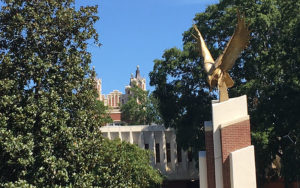 Our Oct. 8 mystery, a screaming eagle, is Winthrop University’s mascot … and is portrayed prominently in bronze on the university’s Rock Hill campus.
Our Oct. 8 mystery, a screaming eagle, is Winthrop University’s mascot … and is portrayed prominently in bronze on the university’s Rock Hill campus.
Only two readers correctly identified the statue. A big tip of the hat to this week’s sleuths: George Graf of Palmyra, Va., and Bill Segars of Hartsville.
Graf provided some context: “According to Winthrop.edu, a 12-foot tall eagle sculpture was installed near the main entrance of the campus on Oakland Avenue. Cornelius, N.C., artist Jon Hair was commissioned to create the original piece of art. While the sculptor is known for his realistic designs, Hair created a more stylistic eagle for Winthrop based on the university logo.
“Hair worked on the Winthrop eagle for 18 months. The massive eagle, with its 12-foot wingspan, was cast in bronze at a foundry in Hawthorne, Calif., and then shipped to Santa Fe, N.M., for a process that resulted in a metallic gold finish. The eagle sculpture will sit on a nearly 20-foot-tall concrete and brick pedestal designed by Hair and built by Leitner Construction Company of Rock Hill.
“Known for his monumental works, Hair has sculpted pieces for galleries, private collections, corporate offices and more than a dozen college campuses. In 2003, Hair was designated ‘Official Sculptor of the U.S. Olympic Team’ and ‘Official Sculptor of the U.S. Olympic Committee.’ The Winthrop monument is the third Hair sculpture for a South Carolina higher education institution.”
- Send us a mystery: If you have a photo that you believe will stump readers, send it along (but make sure to tell us what it is because it may stump us too!) Send it along to editor@charlestoncurrents.com.
HISTORY: Miles Brewton
S.C. Encyclopedia | Merchant and legislator Miles Brewton was born on Jan. 29, 1731, in Charleston to Robert Brewton, a prosperous goldsmith, and his second wife, Mary Griffith. His grandfather Miles Brewton had immigrated to South Carolina from Barbados in 1684 and became a goldsmith and militia officer.
Since his family’s trade was allied to banking, young Miles was well placed for a career in finance and trade. Twice during the 1750s, he traveled to England to finish his education and establish commercial ties. Between 1756 and his death, Brewton conducted business in several partnerships and was part-owner in eight commercial vessels. His partnerships dealt largely with the exportation of domestic produce, but he also made substantial profits in the importation of slaves.
On May 19, 1759, Brewton further expanded his fortune and influence by marrying Mary Izard, daughter of Joseph Izard and Ann Bull. The couple had three children. Through his marriage, numerous land grants, and purchases, Brewton accumulated a large quantity of real estate. However, he made his fortune principally as a merchant rather than as a planter, becoming one of the wealthiest men in South Carolina.
In 1769 Brewton constructed a grand house on King Street and decorated it in the latest English taste. Still standing in the early twenty-first century, the structure is considered one of the finest examples of Georgian architecture in America. During a visit to Charleston in 1773, the Bostonian Josiah Quincy, Jr., dined at Brewton’s town house with several prominent local figures. He described Brewton as “a gentleman of very large fortune” and marveled at his host’s conspicuous wealth. He pronounced the mansion “the grandest hall I ever beheld” and its furnishings “vastly pretty.”
In public life, Brewton was active in the Charleston Library Society and was an officer of the South Carolina Society. In his will he left a legacy of £500 sterling to support the South Carolina Society’s free primary school and £1,000 sterling to establish a college in South Carolina. He served as a commissioner of several public bodies in Charleston, including the Work House and Markets and the projects to build the Exchange and magazines. In 1773 he was elected vice president of the Charleston Chamber of Commerce. Brewton served in the Commons House of Assembly from 1765 until his death, representing the parishes of St. Philip’s, St. John’s Colleton, and St. Michael’s in succession.
In 1773 Lieutenant Governor William Bull recommended him for a seat on the Royal Council, but Brewton’s support of anti-government measures led him to decline the seat. In July 1774 Brewton stood as a conservative South Carolina candidate for the First Continental Congress, but he lost to the more radical Christopher Gadsden. Brewton represented the parishes of St. Philip’s and St. Michael’s in the First Provincial Congress in 1775 and there was elected to the Council of Safety. Lord William Campbell, the last royal governor of South Carolina, was married to Mary Brewton’s first cousin, and on his arrival in Charleston in 1775 he briefly resided at Brewton’s King Street mansion. Also in 1775 Brewton was reelected to the Provincial Congress for its second term, but he would not be able to serve in that body. In late August 1775, on a voyage from Charleston to Philadelphia, Brewton and his family were lost at sea
— Excerpted from an entry by Nic Butler. This entry hasn’t been updated since 2006. To read more about this or 2,000 other entries about South Carolina, check out The South Carolina Encyclopedia, published in 2006 by USC Press. (Information used by permission.)
CALENDAR: Ratepayer hearing, boat show, more
![]() PSC ratepayer public hearing: 6 p.m., Oct. 15, Lonnie Hamilton III Public Services Building, 4045 Bridgeview Drive, North Charleston. The S.C. Public Service Commission hold a hearing for South Carolina Electric & Gas customers to air grievances over nuclear surcharge rates. More about the meeting.
PSC ratepayer public hearing: 6 p.m., Oct. 15, Lonnie Hamilton III Public Services Building, 4045 Bridgeview Drive, North Charleston. The S.C. Public Service Commission hold a hearing for South Carolina Electric & Gas customers to air grievances over nuclear surcharge rates. More about the meeting.
Georgetown Wooden Boat Show: 11 a.m. to 6 p.m., Oct. 20; 11 a.m. to 4 p.m., Oct. 21, Georgetown, S.C. Celebrate wooden boats and boating at this community-wide festival that features one of the Southeast’s best wooden boat exhibits with more than 140 classic wooden boats displayed on land and water, children’s model boatbuilding, knot tying, maritime art and crafts, food and music. Free. Learn more online.
C4WNEW: Nov. 15-16, Trident Technical College, North Charleston. This event, the Center for Women’s annual conference, will feature author Elizabeth Gilbert as special guest. To learn more or buy tickets, click here.
Early morning bird walks at Caw Caw: 8:30 a.m. every Wednesday and Saturday, Caw Caw Interpretive Center, Ravenel. You can learn about habitats and birds, butterflies and other organisms in this two-hour session. Registration not required, but participants are to be 15 and up. $10 per person or free to Gold Pass holders. More: http://www.CharlestonCountyParks.com.
AREA FARMERS MARKETS
SATURDAYS: The Charleston Farmers Market, is back in action from 8 a.m. to 2 p.m. every Saturday through Nov. 24 at Marion Square. A holiday market will be open Dec. 1, 2, 8. 9, 15 and 16.
SATURDAYS: Johns Island Farmers Market operates each Saturday from 9:30 a.m. to 1:30 p.m. year-round with more than 50 local farmers and vendors, food trucks, music and more. The market is located on the campus of Charleston Collegiate School, 2024 Academy Road, Johns Island.
SATURDAYS: The Town Market on James Island are again open. Open 9 a.m. to 1 p.m. every Saturday at the James Island Youth Soccer Club, 871 Fort Johnson Road, James Island.
WEDNESDAYS. The West Ashley Farmers Market, 55 Sycamore Ave., is open every Wednesday from 3 p.m. to 7 p.m. in Ackerman Park. More.
- If you have an event to list on our calendar, please send it to feedback@charlestoncurrents.com for consideration. The calendar is updated weekly on Mondays.
If you like what you’ve been reading, how about considering a contribution so that we can continue to providing you with good news about Charleston and the Lowcountry. Interested? Just click the image below.
https://charlestoncurrents.com/donate/
OUR UNDERWRITERS
Charleston Currents is an underwriter-supported weekly online journal of good news about the Charleston area and Lowcountry of South Carolina.
- Meet our underwriters
- To learn more about how your organization or business can benefit, click here to contact us. Or give us a holler on the phone at: 843.670.3996.
OUR TEAM
Charleston Currents offers insightful community comment and good news on events each week. It cuts through the information clutter to offer the best of what’s happening locally.
- Mailing address: P.O. Box. 22261 | Charleston, SC 29413
- Phone: 843.670.3996
Charleston Currents is provided to you weekly by:
- Editor and publisher: Andy Brack, 843.670.3996
- Contributing photographer: Michael Kaynard
- Contributing editor, common good, Fred Palm
- Contributing editor, money: Kyra Morris
- Contributing editor, Palmetto Poem: Marjory Wentworth
SUBSCRIBE FOR FREE
Subscriptions to Charleston Currents are free.
- Click here to subscribe.
- Unsubscribe. We don’t want to lose you as a reader of Charleston Currents, but if you must unsubscribe, you will have to do it through the email edition you receive. Just go to the bottom of any of your weekly newsletters and click the “unsubscribe” function. If that doesn’t work, please send us an email with the word “unsubscribe” in the subject line.
- © 2008-2018, Statehouse Report, LLC. All rights reserved. Charleston Currents is published every Monday by Statehouse Report LLC, PO Box 22261, Charleston, SC 29413.



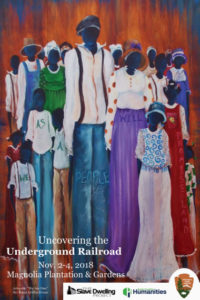
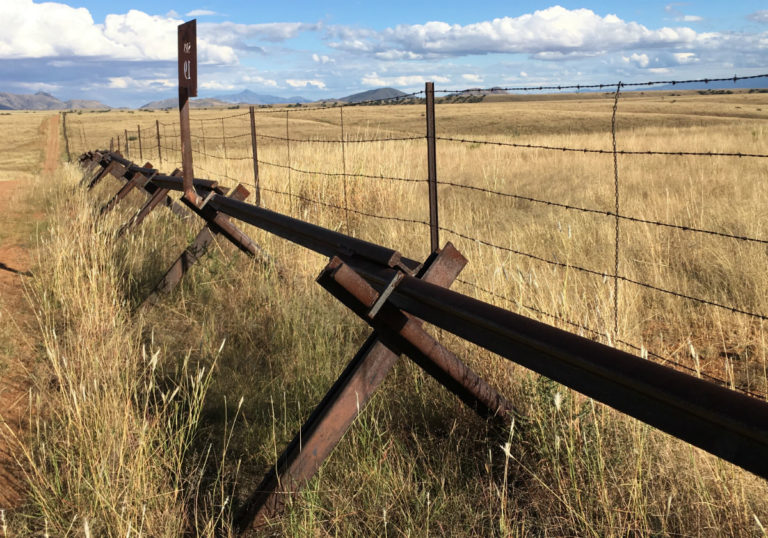
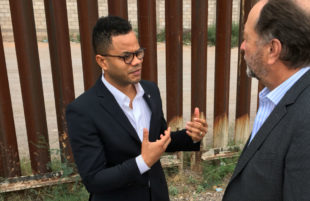


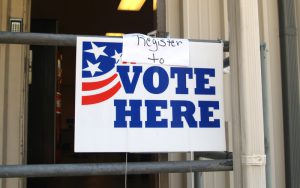
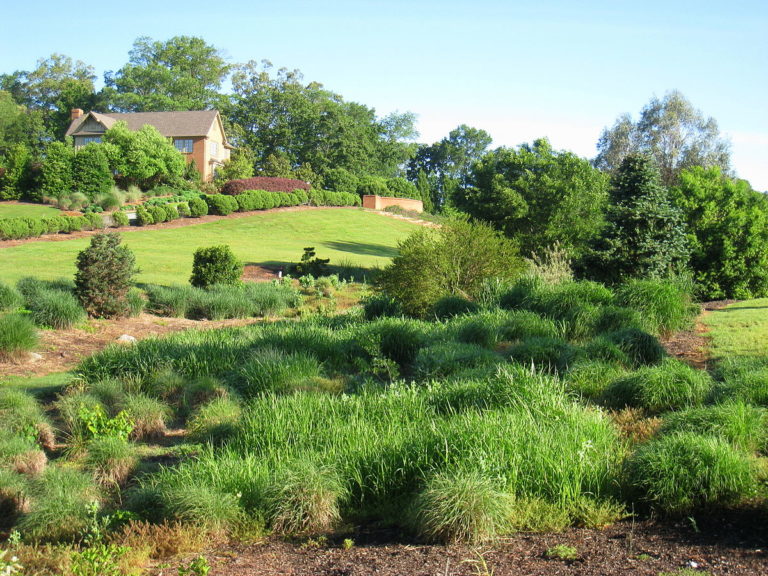


 We Can Do Better, South Carolina!
We Can Do Better, South Carolina!
























